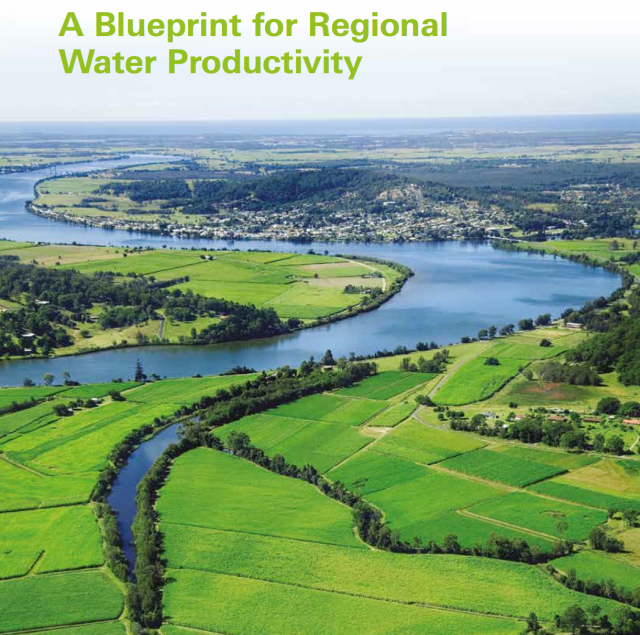Water productivity 
Download the full document by clicking the link above the picture.
This document was prepared by The University of Melbourne as part of its flagship innovation initiative, Carlton Connect (www.carltonconnect.com.au). An expert, strategic advisory committee, which contributed towards the methodology and content of this Blueprint, included representatives from the Bureau of Meteorology, the Commonwealth Environmental Water Office, Geosciences Australia, the National Water Commission and the Victorian Department of Environment and Primary Industries. The Murray Darling Basin Authority was also consulted as part of the process. However, the views expressed herein are the views of the University of Melbourne based on the consultation process and are not a reflection of any official policy or consensus amongst these organisations.
A Research and Development Advisory Committee provided many contributions to this report. This group included: Dr Margaret Ayre, Professor Snow Barlow, Dr Brian Cook, Dr Bob Farquharson, Dr Sigfredo Fuentes, Professor Lee Godden, Professor David Karoly, Professor John Langford, Dr Veronika Nemes, Associate Professor Ruth Nettle,
Dr Murray Peel, Dr Vincent Pettigrove, Associate Professor Ian Rutherfurd, Dr Dongryeol Ryu, Dr Khusro Saleem, Professor Peter Scales, Dr Dominic Skinner, Dr Mohsen Kalantari Soltanieh, Associate Professor Michael Stewardson, Dr Angus Webb, Professor Andrew Western and Associate Professor Erik Weyer.
The project team would like to sincerely thank those that readily gave their time to participate in online surveys and workshops.
An appropriate citation for this publication is:
Stewardson M.J., D. Skinner, M. Ayre, S. Barlow, B. Cook, B. Farquharson, S. Fuentes, L. Godden, D. Karoly,
J. Langford, V. Nemes, R. Nettle, M. Peel, V. Pettigrove, I. Rutherfurd, D. Ryu, K. Saleem, P. Scales, M.K. Soltanieh, A. Webb, A. Western, E. Weyer. 2014. Water Productivity Blueprint. The University of Melbourne, Melbourne.




